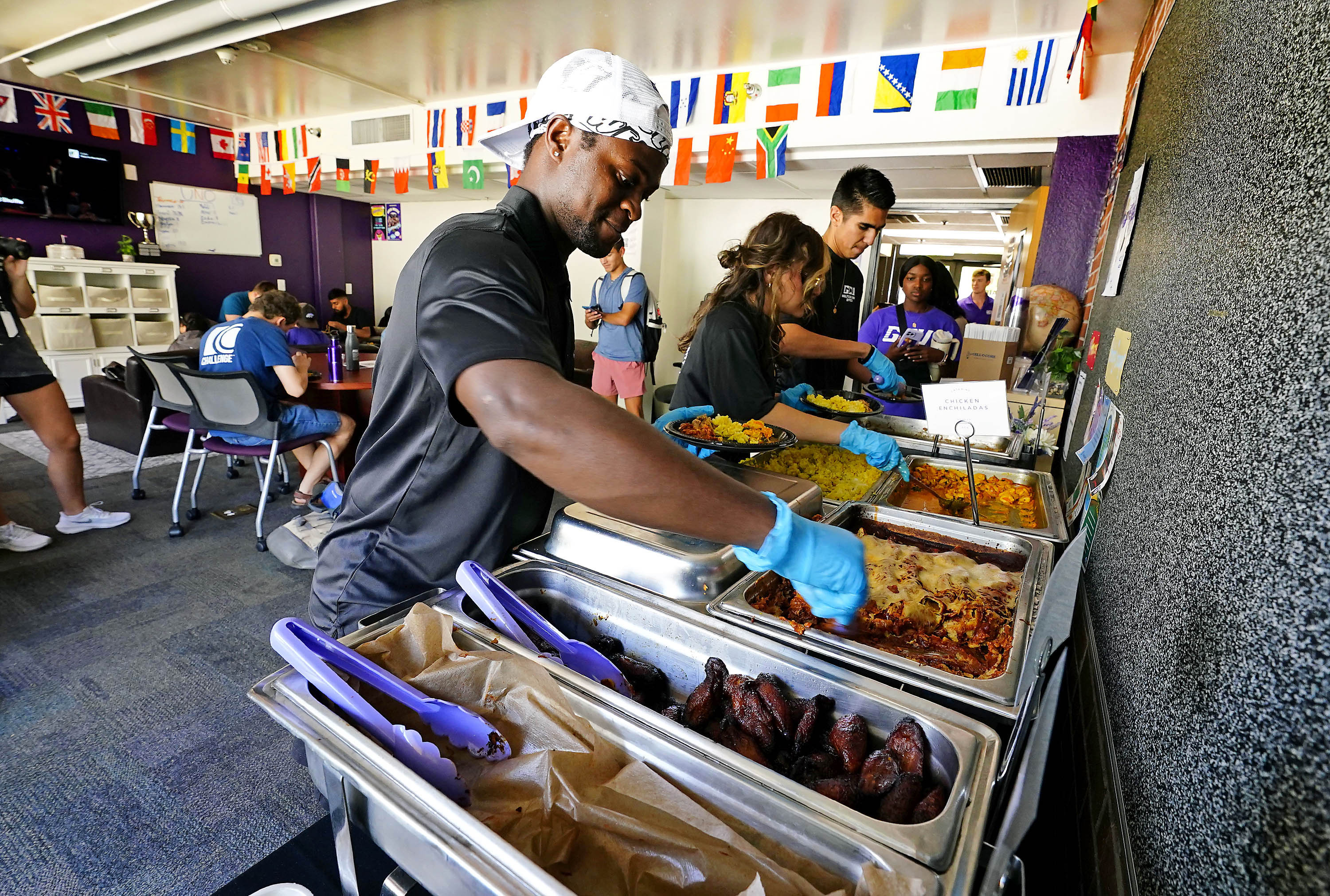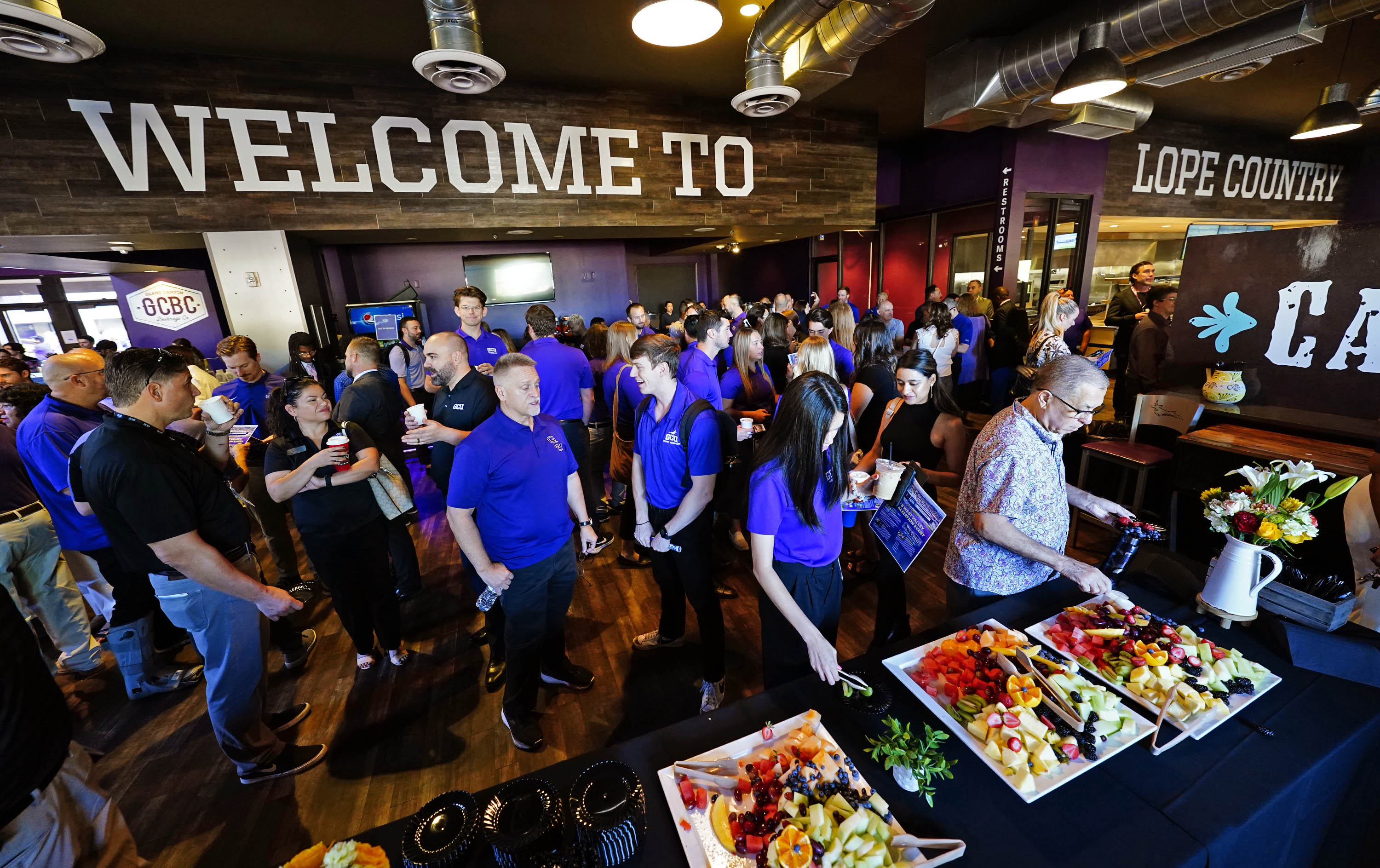
PHOENIX (July 20, 2018) -- As Grand Canyon University gets set to welcome the largest incoming class in its history this fall, there is plenty of good news to share.
- GCU expects roughly 7,200 new students with an average incoming GPA of more than 3.5 for fully admitted students – bringing total enrollment on the Phoenix campus to approximately 20,500. Enrollment for the online campus is more than 70,000.
- The Honors College has grown to 2,000 students, with an average incoming GPA of 4.1 this year.
- GCU produced a record of 23,177 traditional and online graduates in the 2017-18 school year.
- On July 1, the University completed its transaction to revert to the nonprofit status it held from 1949-2004.
- And, finally, the four-year graduation rate for traditional students at GCU has climbed to 58 percent for the 2014 cohort, while the graduation rate for online students sits at 65 percent. When the current management team assumed a leadership role at the University in 2008, those numbers were 40 and 48 percent, respectively.
“That is a reflection of the high-quality students that are attracted to GCU, the incredible efforts of our faculty and the tremendous amount of academic support services that are available to students once they are enrolled,” GCU President Brian Mueller said of the graduation rates. “We continue to grow as a university at an amazing rate, but we’re doing it with high-quality students and high-quality results.”
GCU, which is known for its financial transparency regarding complete costs for students, is extending that transparency by officially reporting its graduation rates for every college for both traditional and online students for the past nine years.
As shown in the accompanying chart, four-year graduation rates for all seven colleges on the ground campus exceeded 50 percent for the 2014 cohort, with a high of 64 percent for students in the College of Education. Among online students, highlights include an 84 percent graduation rate for graduate students in the College of Nursing and Health Care Professions, an 83 percent grad rate for CONHCP baccalaureate students, a 78 percent grad rate for graduate students in the College of Education, and a 75 percent grad rate for graduate students in the Colangelo College of Business.
The increasing graduation rates across all programs at GCU over the past nine years coincides with the increasing quality of its students, as measured by average incoming GPA, during that same time period. Average incoming GPAs for traditional students were 2.7 in 2008 and have climbed steadily to 3.5 as GCU has increased its admission requirements.
GCU’s graduation rates reflect the performance of all types of students, including graduate students pursuing advanced degrees and undergraduate students who transfer from other institutions with earned credits.
By contrast, the graduation rates that appear on the Integrated Postsecondary Education Data System (IPEDS) and College Scorecard websites (whose data is also reflected on the Google Knowledge Panel) only considers “first-time, full-time” students, which is a small cross section of the student body at many modern universities. Many academics have pointed out that this is a flawed measurement because it excludes the aforementioned graduate students and transfer students who typically have greater degrees of academic success than those who arrive with no college experience.
That IPEDS data is even more misleading as it relates to GCU because graduate and transfer students comprise more than 75 percent of the university’s student population. Further, the IPEDS data is antiquated as it looks at a six-year trailing period that dates back to 2008 and 2009 (when GCU was a vastly different institution) and is based on a statistically meaningless sample size as it relates to GCU.
For example, IPEDS’ purported six-year graduation rate of 31 percent at GCU for the 2008 and 2009 cohorts reflects only first-time, full-time students, of which there were only 388 students. Given that GCU’s current enrollment is upwards of 90,000 students, the academic progress of a sample representing less than 0.5 percent of that population is statistically meaningless and misleading to those seeing the figure as reflective of the University and its current programs. Even back in 2008, the 388 first-time, full-time students represented a small percentage of the overall student body at that time.
“Our hope is that the Department of Education will look at the data that it is requiring universities to report to ensure that it paints an accurate and complete picture of those institutions,” Mueller said. “In the interim, we will continue to self-disclose our complete graduation rates in order to be as transparent as possible with students and families.”
In addition to the increased graduation rates, Mueller was excited about the performance of recent graduates from GCU’s nursing program. Year to date, those graduates have passed their professional licensure exam at a 92.9 percent rate on their first attempt, including a 95.7 percent pass rate in the second quarter, while the University is still producing the largest number of professional nurses of any program in Arizona.
Mueller is also looking forward to the 2018-19 school year because it will be the 10th consecutive year in which it has frozen tuition on the ground campus. After institutional scholarships, traditional students are paying an average of $8,600 in tuition, and approximately $7,500 for room and board for those who reside on campus. Average tuition paid by online students is roughly $8,900 per year.
More telling, traditional students at GCU are incurring less debt (an average of $18,750) than the average at public universities ($25,550) and far below the average at nonprofit private universities ($32,300) or for-profit colleges ($39,950), according to data from the Institute for College Access and Success.
“When you look back at where we began in 2008, it has been a blessing to witness the remarkable success we have achieved as a university and the amazing accomplishments of our students and graduates,” Mueller said. “Better yet, we believe the best is yet to come.”





































